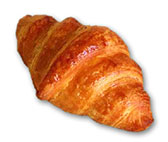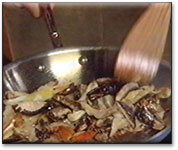Methyl ketones and lactones are the primary components responsible for the cooked flavor associated with baked goods made with butter.
Baked & carmalized
|
|
Both methyl ketones and lactones are present in fresh butter at levels which are below the concentration at which their taste is perceptible. Upon heating, however, the total concentration of both lactones and methyl ketones becomes noticeable. The two compounds also react in a synergistic manner, providing the rich flavor associated with baked goods made with real butter.
The above compounds, and numerous others, interact to contribute to the unique flavor of fresh, sweet cream butter. However, butter also has a variety of flavor compounds which create the developed, baked butter flavor typically associated with croissants, butter cookies and other baked goods using butter.
The methyl ketones and lactones also interact with the flavors developed through the Maillard reactions (browning reactions between sugars and proteins), creating flavor notes traditionally associated with caramels, pralines, and toffee. Most sources agree that a good quality caramel must be made using condensed milk and butter.
Although the compounds that contribute to this unique flavor are not completely understood, it is believed that they are a combination of the flavor compounds developed from browning reactions, which occur both in the dough and in butter.
Fried
|
|
Butter also develops specific flavor compounds when it is used in frying applications. The reaction flavors, which are produced in the process, are highly unique to butter. Scientists believe that the flavor compounds that impart this unique flavor develop during cooking and are comprised of non-fat components from the serum phase of butter that interact with flavor derivatives of the fat phase. Factors that affect and create butter flavor are not clearly understood. Butter flavor is very complex, and research that has been published to date only scratches the surface of what is left to learn about this system. This is one of the reasons butter’s flavor remains irreplaceable.


